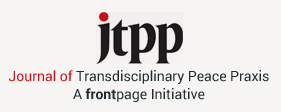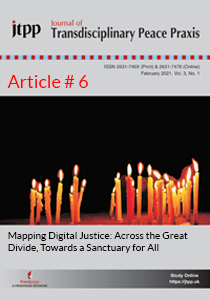Description
Mapping Digital Justice: Across the Great Divide, Towards a Sanctuary for All
Randall Amster (Professor & Co-Director of the Justice & Peace Studies and Environmental Studies programmes at Georgetown University, USA)
This article explores the justice and peacebuilding implications of a ‘digital divide’ that fosters differential access to online opportunities and other technological resources often associated with mobility, equity, and prosperity.
Coverage maps indicate uneven digital access across geographical and socioeconomic factors, while patterns of internal stratification reveal how mechanised systems spark emerging regimes of predictive policing, digital profiling, and technologically driven punitive methods that can exacerbate structural inequalities.
In an era when some users are so tech-saturated that they are seeking tools to manage their utilisation, others have yet to experience the ostensible benefits of technology and decide what level of usage is appropriate for them.
Drawing upon varied experiences in which digital access is problematic if not altogether absent for many individuals and communities, this article seeks to illuminate questions of how identities are formed in the digital age, how preexisting inequalities impact access to technology, and the implications of how the benefits and burdens of emerging technologies are distributed.
In the era of COVID-19, when essentials of access to resources and productivity are being thoroughly digitised, the need for critical engagement is more urgent than ever.





